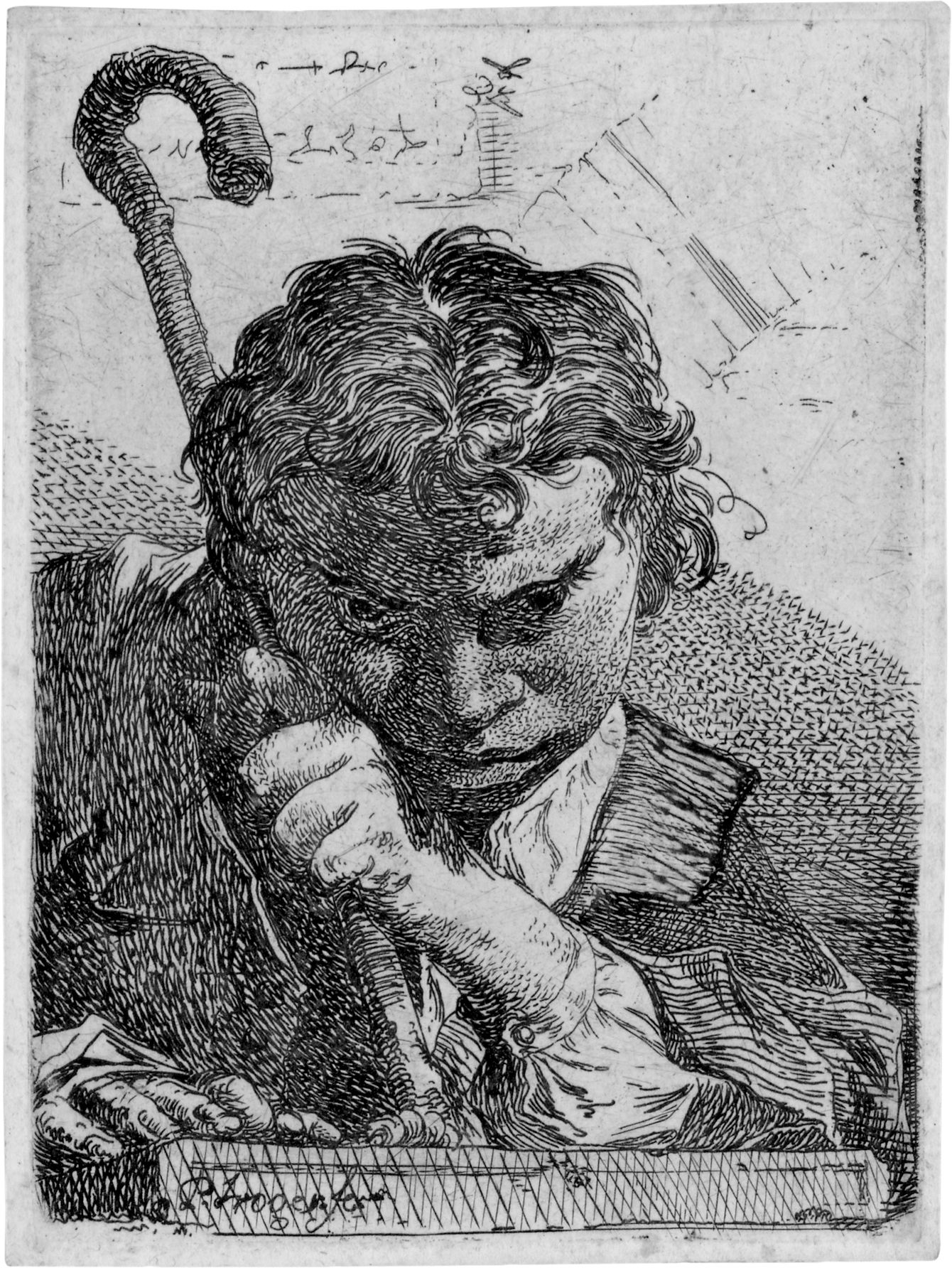Loading the page ...
Paul Troger
(1698 Welsberg – 1762 Vienna)
Italian Shepherd Boy with Staff. Etching. 19.9 x 7.9 cm. Nagler 3; Aschenbrenner/Schweighofer 298.
Paul Troger’s works are rare and his printed oeuvre has not been extensively researched to date. Nagler described a total of twenty-three etchings, two of which are regarded as questionable, and his oeuvre was not expanded in the 1965 monograph by W. Aschenbrenner and G. Schweighofer (Paul Troger. Leben und Werk, Salzburg 1965).
Troger’s light, painterly etchings derive their appeal from the originality of the iconography, a vivid illustration of which is the present extremely rare print Italian Shepherd Boy with Staff. The small sheet conveys a sombre, melancholic mood, its appeal enhanced by the freedom and lightness of the treatment. Troger has largely dispensed with clear contours, resorting instead to fine linework comprising cross and parallel hatching, fine strokes and little dots to accurately convey materiality and three-dimensionality. He was clearly inspired by Italian designs. This type of shepherd boy with his large head, narrow eyes and thick lips recalls Piazzetta’s figure drawing, and the striking chiaroscuro also appears to have its origins in this master.
Disappointingly little is known about Troger’s youth and the life he lived between 1716 and 1724. What is certain is that he undertook a study trip to Italy lasting several years during which he stayed in Rome, Bologna and Padua. Of crucial importance for his artistic development was a lengthy stay in Venice, where he was greatly influenced by Giovanni Battista Piazzetta, Sebastiano Ricci and especially Giovanni Battista Pittoni. After his return from Italy around the mid-1720s Troger’s ceaseless activities enabled him to compile an artistic oeuvre of considerable dimensions. Together with Daniel Gran and Raphael Donner he ranks among the foremost representatives of the Austrian Baroque.
A superb, nuanced and contrasting impression with thread margins. In mint condition. From the collections of Karl Ritter von Zepharovich, Vienna (Lugt 2675) and Philipp Herrmann, Karlsruhe (Lugt 1352a).
Contact us for further information